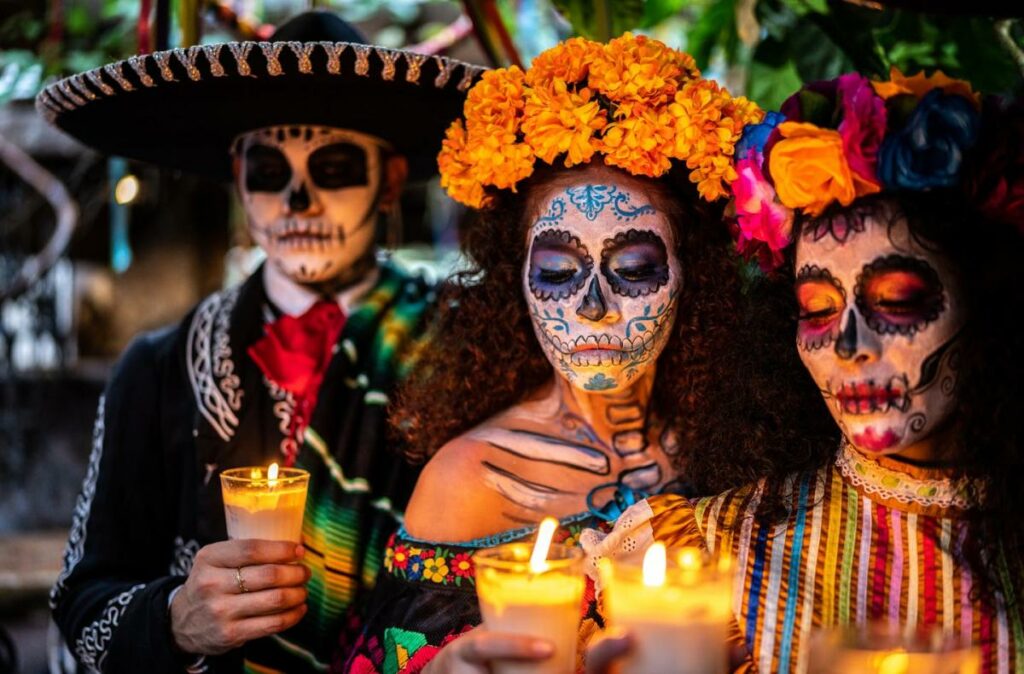People gather on the island of Janitzio, Mexico, to clean the graves of their deceased loved ones, decorate them with marigolds and bring baskets with offerings for the Day of the Dead in Mexico. Gerardo Vieyra/NurPhoto via Getty ImagesCelebrations continue
The island of Janitzio on Lake Pátzcuaro and Mexico City show how Indigenous choices helped their traditions survive despite Spanish influence. In the city of Pátzcuaro, sharing food with the dead during harvests continued alongside All Saints’ Day and All Souls’ Day. Meanwhile, in Mexico City, the history of public ritual sacrifice gave way to the religious pageantry of Spain’s Renaissance.
Today, individuals and groups continue to decide how to celebrate the Day of the Dead. Whether it’s about communicating with the dead, letting go, or believing they remain among the living, the holiday’s strength lies in its ability to hold many meanings.
As long as Indigenous, Spanish and modern Mexican customs continue in home rituals and public celebrations of past lives, current lives and cultural heritage, the Day of the Dead will be alive and well.
This article is republished from The Conversation, a nonprofit, independent news organization bringing you facts and trustworthy analysis to help you make sense of our complex world. It was written by: Ezekiel Stear, Auburn University
Read more:
Ezekiel Stear does not work for, consult, own shares in or receive funding from any company or organization that would benefit from this article, and has disclosed no relevant affiliations beyond their academic appointment.
Source link : http://www.bing.com/news/apiclick.aspx?ref=FexRss&aid=&tid=671bf381b483460282eebb9b1e5ddaf0&url=https%3A%2F%2Fwww.yahoo.com%2Flifestyle%2Fmexico-day-dead-celebrations-blend-134449062.html&c=6122527951033048216&mkt=de-de
Author :
Publish date : 2024-10-25 10:33:00
Copyright for syndicated content belongs to the linked Source.
